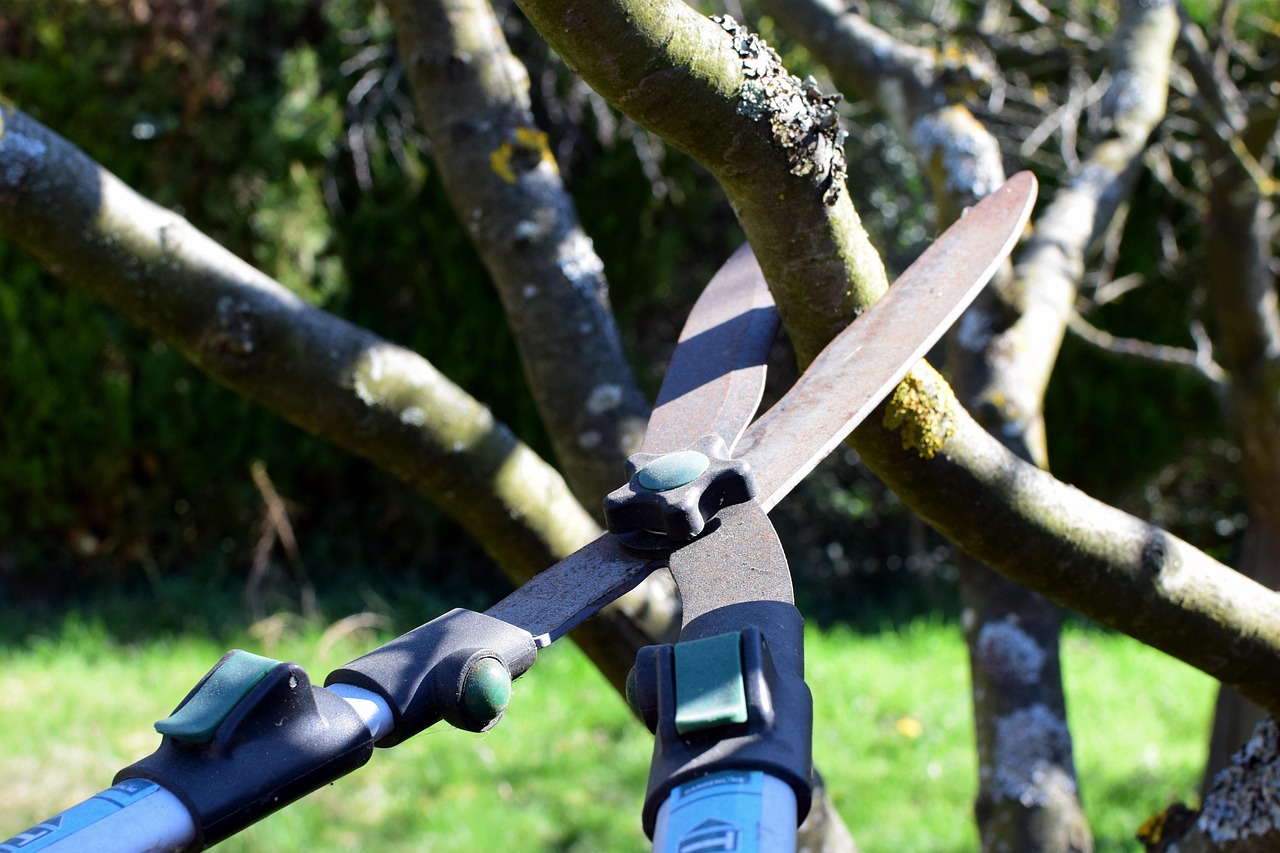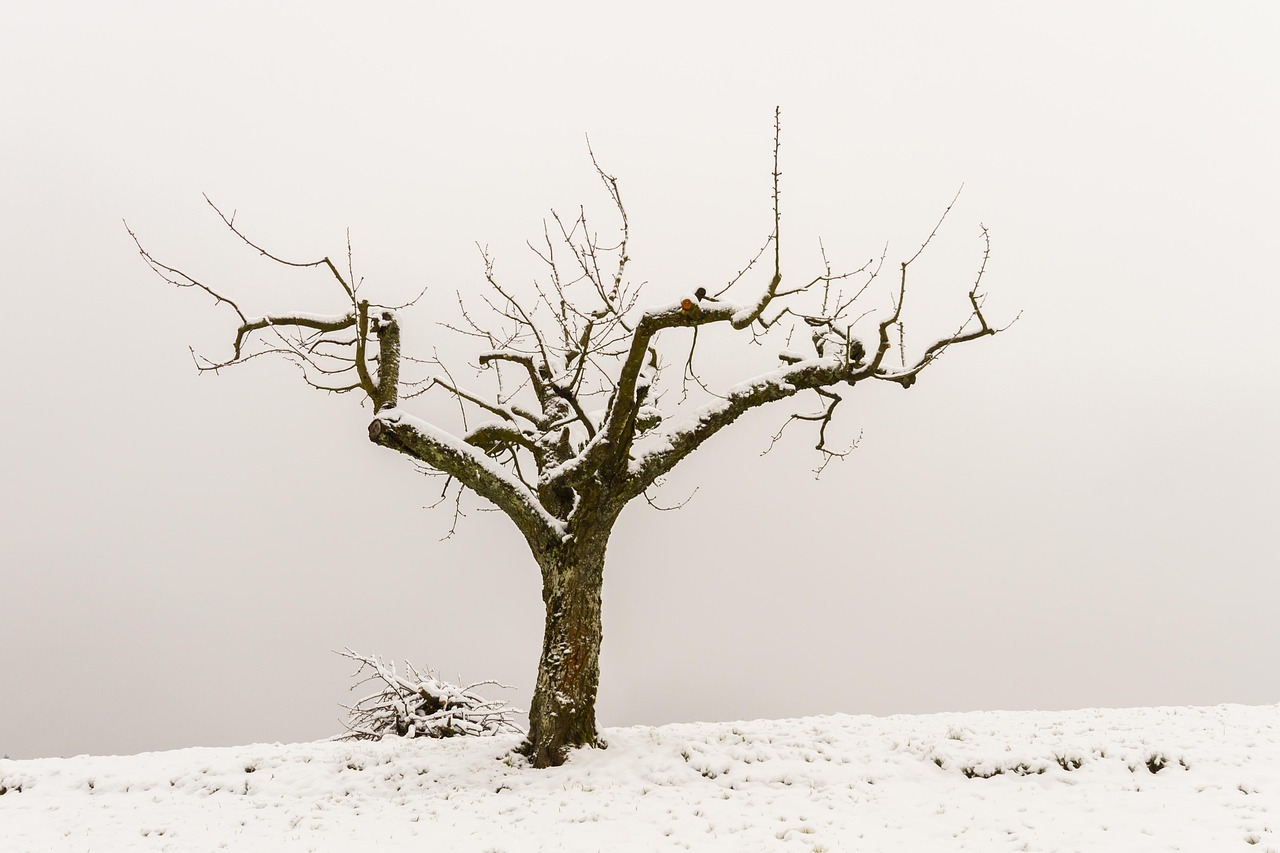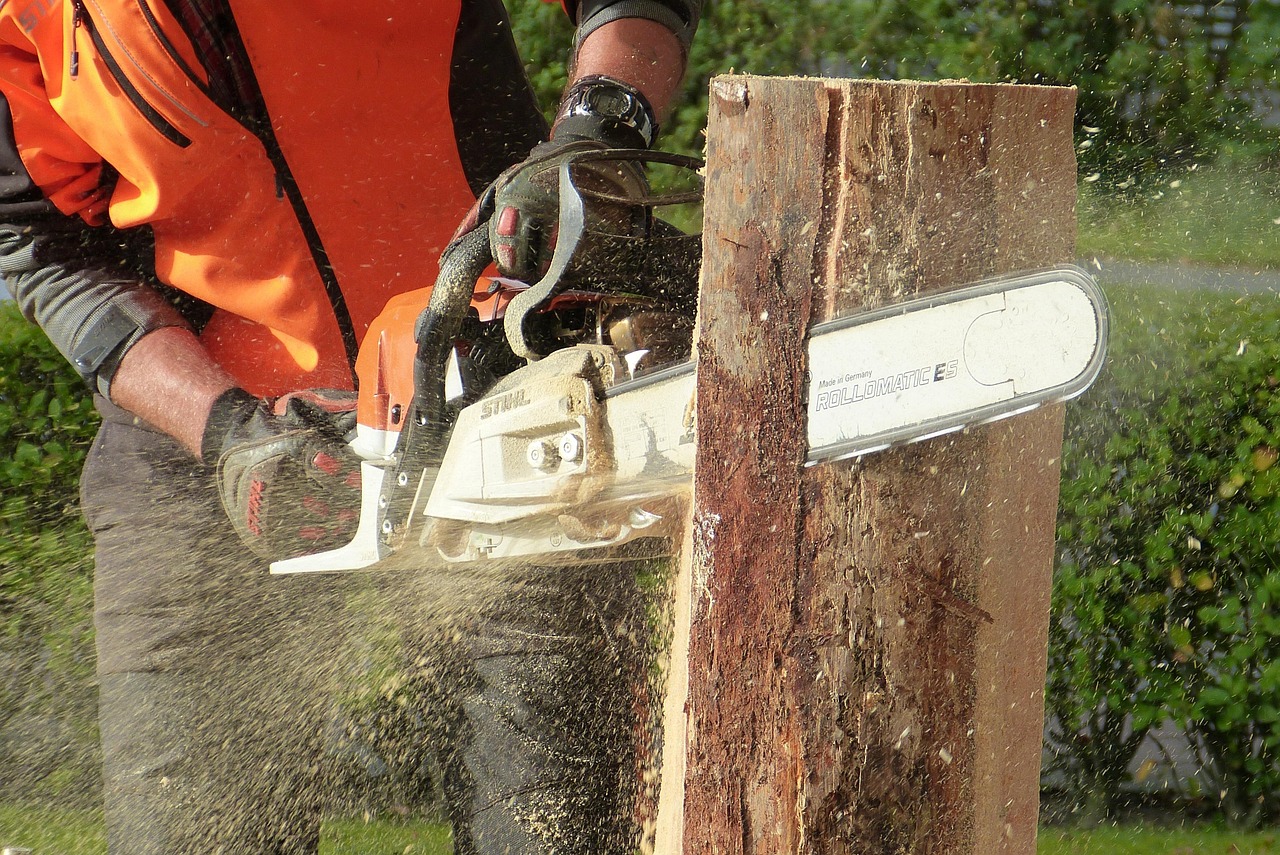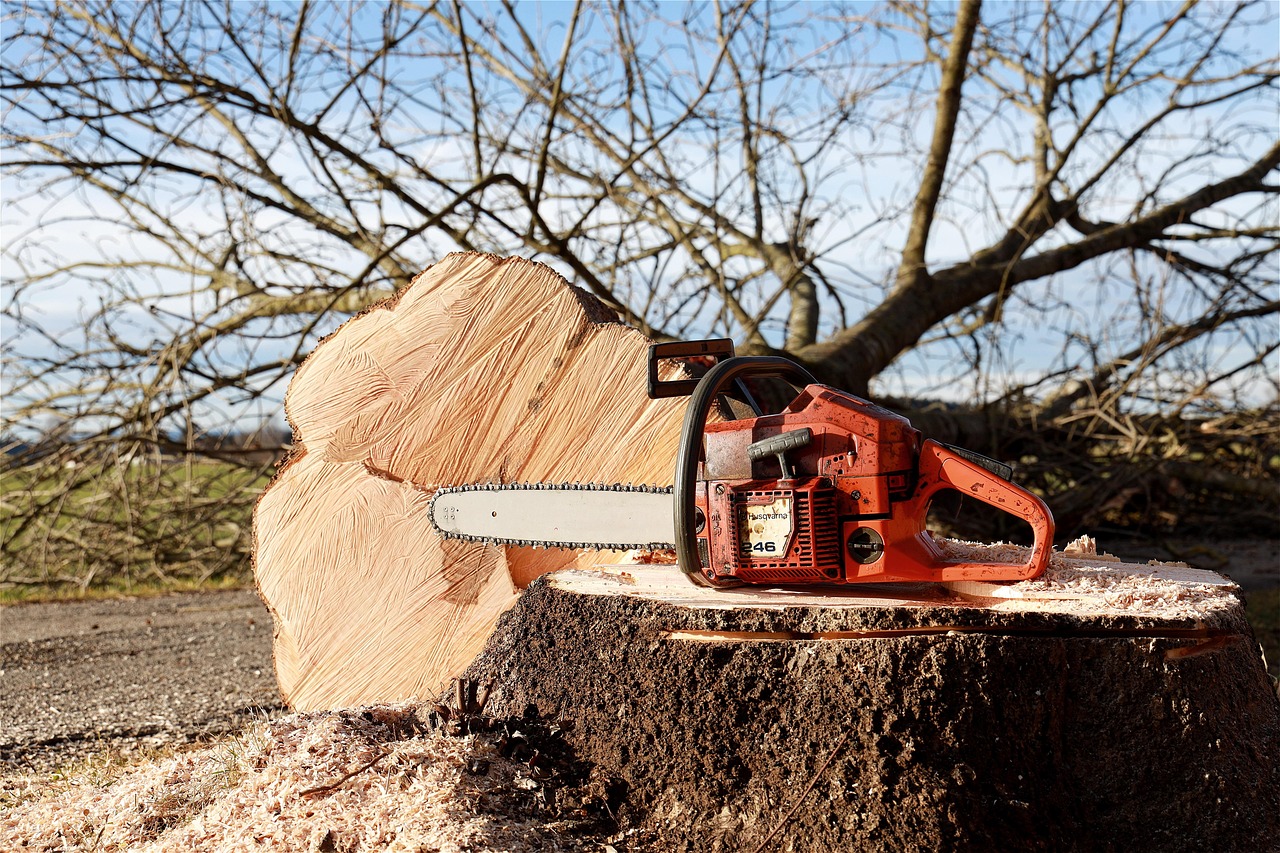High-altitude tree pruning techniques focus on safety and efficiency. These methods involve using specialized equipment, proper techniques, and personal protective gear to ensure the safety of both the workers and the surrounding environment while maintaining tree health.
Tree pruning is essential for maintaining healthy trees, especially in urban environments. High-altitude pruning involves working at significant heights, which presents unique challenges and risks. Understanding the correct techniques and safety measures is crucial for arborists and landscapers. As trees grow taller, their branches become more difficult to reach. This often necessitates working from heights, which increases the risk of accidents if proper protocols are not followed.

The techniques used in high-altitude tree pruning can vary depending on the tree species, the environment, and the specific job requirements. However, there are some universal safety practices that everyone should follow. These practices not only protect the worker but also ensure that the trees remain healthy during and after the pruning process.
Understanding High-Altitude Pruning Techniques
High-altitude tree pruning can be divided into several key techniques. Each technique has its own benefits and is suited to different situations. Here are some commonly used methods:
- Climbing with Ropes: This involves using climbing ropes and harnesses to ascend the tree safely. Arborists tie themselves securely to the tree to prevent falls.
- Use of Ladders: In some cases, ladders may be used. However, they should be used with caution as they can become unstable if not positioned correctly.
- Aerial Lift Equipment: Cherry pickers or bucket trucks provide a stable platform for pruning. They are ideal for reaching high branches without climbing.
- Rigging Techniques: Rigging involves using ropes to lower heavy branches safely to the ground. This technique minimizes damage to the tree and surrounding area.
Each of these techniques requires training and experience. Arborists must be skilled in assessing which method is best for a given situation. For instance, climbing with ropes may not be suitable for every type of tree or branch condition.

Safety Equipment for High-Altitude Pruning
Safety is paramount when engaging in high-altitude tree pruning. The following equipment should always be utilized:
- Personal Protective Equipment (PPE): This includes hard hats, gloves, eye protection, and hearing protection.
- Climbing Gear: Harnesses, ropes, and carabiners are essential for those who climb trees.
- Communication Devices: Two-way radios can help maintain communication among team members, especially in noisy environments.
- First Aid Kit: A comprehensive first aid kit should always be on hand in case of emergencies.
Using the right safety equipment reduces the risk of injury significantly. Proper training on how to use this equipment is equally important to ensure that every arborist knows what to do in an emergency situation.
Factors Influencing Tree Pruning Techniques
Several factors influence which high-altitude pruning technique is chosen. These include:

| Factor | Description |
|---|---|
| Tree Species | Different species have varying growth habits and branch structures, affecting pruning methods. |
| Branch Height | The height of the branches will dictate whether climbing or aerial lifts are necessary. |
| Environmental Conditions | Wind, rain, or snow can impact safety and techniques used for pruning. |
| Access to Site | The location of the tree may limit equipment options or dictate specific safety protocols. |
These factors must be carefully considered before beginning any pruning work. Proper planning helps ensure that the right techniques are applied effectively and safely.
In summary, understanding high-altitude tree pruning techniques is essential for maintaining both safety and tree health. Skilled arborists must be well-versed in various methods and equipped with necessary safety gear to minimize risks while performing their vital work at heights.
Essential Tools for High-Altitude Tree Pruning
In order to carry out high-altitude tree pruning safely and effectively, arborists need the right tools. Having the correct equipment improves efficiency and ensures safety during the pruning process. Below are some essential tools that every arborist should consider for high-altitude pruning:

- Pruning Saws: These are specialized saws designed for cutting branches. They come in various sizes and styles, including pole saws for reaching high branches.
- Loppers: Loppers are used for cutting larger branches and have long handles for added leverage.
- Chainsaws: For larger jobs, chainsaws are often necessary. Arborists should use lightweight models specifically designed for pruning.
- Rope and Harness Systems: These systems allow for safe climbing and secure attachment to trees while working at heights.
- Safety Gear: Hard hats, gloves, eye protection, and reflective vests are crucial for personal safety.
Choosing the Right Pruning Saw
When selecting a pruning saw, consider the type of branches you will be cutting. The following factors can influence your choice:
- Branch Size: Choose a saw that is appropriate for the size of the branches you are dealing with. Smaller saws are better for delicate branches, while larger saws can handle thick limbs.
- Type of Cut: Different saws are designed for different types of cuts, such as cross-cutting or rip-cutting. Ensure you select a saw that matches your cutting needs.
- Weight: Consider the weight of the saw, especially if you will be using it at heights. A lighter saw can reduce fatigue during extended use.
Proper Techniques for Tree Pruning
Using the correct pruning techniques is essential to promote healthy growth and minimize damage to the tree. Here are some key techniques to follow:
The Three-Cut Method
This method is particularly useful for large branches and helps prevent tearing of the bark. The steps are as follows:
- First Cut: Make an undercut about one-third of the way through the branch from underneath. This cut prevents the bark from tearing.
- Second Cut: Make a cut on top of the branch a few inches away from the first cut to remove the branch. This cut should go all the way through.
- Third Cut: Remove the stub left by the first cut by cutting just outside the branch collar to allow for healing.
Thinning and Crown Reduction
Thinning involves selectively removing branches to increase light penetration and air circulation within the tree. Crown reduction reduces the overall size of the tree while maintaining its natural shape. Here are some tips:
- Selectively Prune: Focus on removing dead or diseased branches. This promotes healthy growth.
- Avoid Topping: Topping can cause stress to the tree and lead to poor growth. Always aim for a natural shape.
Environmental Considerations in Tree Pruning
Environmental factors play a significant role in determining when and how to prune trees. Arborists must consider these factors to avoid harming trees or their surroundings.
Seasonal Timing
The best time to prune trees depends on their species and local climate. Generally, late winter or early spring is optimal, as trees are still dormant and will heal faster after pruning. However, consider these points:
- Avoid Pruning in Fall: Pruning during fall can expose trees to diseases as they prepare for winter.
- Monitor Weather Conditions: Avoid pruning during wet or windy conditions to prevent accidents.
Impact on Wildlife
Before pruning, it’s important to assess whether any wildlife may be affected. Some birds nest in trees during spring. To protect wildlife, consider these practices:
- Check for Nests: Inspect trees for nests before pruning, particularly in spring.
- Avoid Disturbance During Breeding Seasons: Delay pruning if nesting birds are present.
Caring for trees responsibly involves understanding both the biological and ecological aspects of tree health. Arborists should always aim for sustainable practices that benefit both trees and their surrounding ecosystems.
Best Practices for High-Altitude Tree Pruning
Implementing best practices during high-altitude tree pruning not only enhances safety but also improves the overall outcome of the project. These practices help ensure that trees remain healthy and that arborists can perform their work effectively. Below are some essential best practices to follow.
Pre-Pruning Assessment
Before beginning any pruning work, a thorough assessment of the tree and its surroundings is crucial. This assessment should include:
- Tree Health Evaluation: Check for signs of disease or damage. Knowing the tree’s condition helps determine the extent of pruning needed.
- Branch Inspection: Look for weak or dead branches that may pose a risk during pruning.
- Site Conditions: Assess the work area for potential hazards, such as overhead power lines or uneven ground.
Use of Cutting Techniques
Applying the right cutting techniques is vital for minimizing damage to the tree. Here are a few effective cutting techniques to consider:
- Flush Cuts: Avoid making flush cuts on the branch collar. This can hinder the tree’s ability to heal and may lead to decay.
- Angle Cuts: Make cuts at an angle to help water run off and prevent rot.
- Leave Branch Collars: Always leave the branch collar intact when making cuts. This helps the tree recover more efficiently.
Health and Safety Protocols
Ensuring health and safety during high-altitude pruning is paramount. Following established protocols can significantly reduce risks. Here are some vital health and safety protocols to observe:
Emergency Preparedness
Being prepared for emergencies is essential when working at heights. Consider the following measures:
- First Aid Training: Ensure that all team members are trained in first aid and CPR. This knowledge can be crucial in emergencies.
- Emergency Plan: Develop a clear plan outlining procedures for different emergency scenarios, including falls or equipment failure.
- Communication System: Establish a reliable communication method among team members to quickly relay information during emergencies.
Regular Equipment Maintenance
Your tools are only as effective as their condition. Regular maintenance of equipment is necessary to ensure safety:
- Inspect Tools: Regularly check all tools for wear and tear. Replace or repair any damaged equipment.
- Sharpen Blades: Keep saw blades and loppers sharp for efficient cutting, which reduces fatigue and increases safety.
- Clean Equipment: After each use, clean your tools to remove sap and dirt, which can lead to rust and decreased functionality.
Training and Certification
Training and certification in tree care practices enhance safety and efficiency in high-altitude pruning. Arborists should seek out relevant training opportunities:
Professional Development Programs
Consider enrolling in professional development programs that focus on arboriculture and tree care. These programs often cover:
- Aerial Rescue Techniques: Training on how to perform rescues if a team member becomes injured while working at heights.
- Climbing Techniques: Instruction on safe climbing practices, including knot tying and harness use.
- Tree Biology: Understanding tree biology helps arborists make informed decisions regarding pruning practices.
Certification Organizations
Certain organizations offer certification programs that validate an arborist’s skills and knowledge. Some well-respected organizations include:
| Organization | Certification Offered |
|---|---|
| International Society of Arboriculture (ISA) | Certified Arborist |
| Tree Care Industry Association (TCIA) | Certified Tree Care Safety Professional (CTSP) |
| National Arborist Association (NAA) | Certified Arborist |
Pursuing certification not only enhances a professional’s credentials but also demonstrates a commitment to best practices in tree care.
The Role of Technology in Tree Pruning
The integration of technology into tree pruning practices can enhance safety and efficiency. Various tools can assist arborists in their work:
Drones for Tree Assessment
Drones are increasingly used for assessing tree health and structure from above. They provide valuable insights before pruning begins by allowing arborists to:
- Avoid Hazardous Situations: Drones can identify hazardous branches without needing to climb, minimizing risk.
- Map Tree Canopies: Create visual maps of tree canopies to plan pruning strategies effectively.
Mobile Apps for Planning
A variety of mobile apps are available to help arborists plan their work, track progress, and manage their schedules. Features often include:
- Scheduling Tools: Manage appointments and job sites efficiently.
- Pest Identification Guides: Help identify potential threats to tree health on-site.
The thoughtful application of technology in high-altitude tree pruning not only promotes safety but also enhances overall operational efficiency, making it an invaluable asset for modern arborists.
Additional Considerations in High-Altitude Tree Pruning
Beyond the essential techniques and safety measures discussed, several additional considerations can further enhance the practice of high-altitude tree pruning. Awareness of these factors can help arborists operate more effectively while maintaining the health of the trees and their surrounding environment.
Seasonal Changes and Their Impact
Understanding seasonal changes is crucial for effective pruning. Different times of the year can influence tree health and growth patterns:
- Spring Growth: Trees begin to come alive in spring, making it a time for light pruning. This encourages healthy growth before the tree enters its active growth phase.
- Summer Maintenance: Summer is often a good time for minor maintenance pruning. Removing dead or damaged branches during this season can improve air circulation.
- Fall Preparation: As trees prepare for winter, avoid heavy pruning in fall. This allows trees to store energy for the colder months ahead.
Environmental Stewardship
Arborists have a responsibility to promote environmental stewardship. By adopting eco-friendly practices, they can contribute positively to the ecosystem:
- Sustainable Practices: Use organic pesticides and fertilizers when necessary to promote tree health without harming the environment.
- Tree Recycling: Repurpose cut branches and wood chips for mulch or compost, reducing waste and enhancing soil health.
Community Engagement
Engaging with the community can enhance awareness about tree care and the importance of proper pruning techniques:
- Educational Workshops: Hosting workshops can educate community members about tree care and the significance of professional pruning.
- Volunteer Days: Organizing community volunteer days for tree planting or care can foster a sense of community and responsibility toward local green spaces.
Final Thoughts
High-altitude tree pruning is a critical aspect of maintaining healthy trees, especially in urban environments where trees face various stresses. By utilizing the right techniques, tools, and safety measures, arborists can perform this task effectively and safely. The integration of technology, such as drones and mobile apps, can significantly enhance planning and execution, allowing professionals to assess tree health from multiple angles.
Moreover, understanding seasonal impacts, adhering to safety protocols, and engaging in sustainable practices ensures that arborists not only care for the trees but also contribute positively to their ecosystems. Community involvement further strengthens this impact by fostering awareness and appreciation for tree care among local residents.
As the field of arboriculture continues to advance, staying informed about new techniques, technologies, and best practices will empower arborists to face challenges confidently. Those who embrace these developments will not only enhance their skills but also ensure the long-term health and vitality of the trees they manage.
In conclusion, high-altitude tree pruning is more than just a task; it is a blend of art and science aimed at preserving our green resources. By prioritizing safety, utilizing modern tools, and committing to environmental stewardship, arborists can play a vital role in sustaining healthy urban forests for generations to come.
